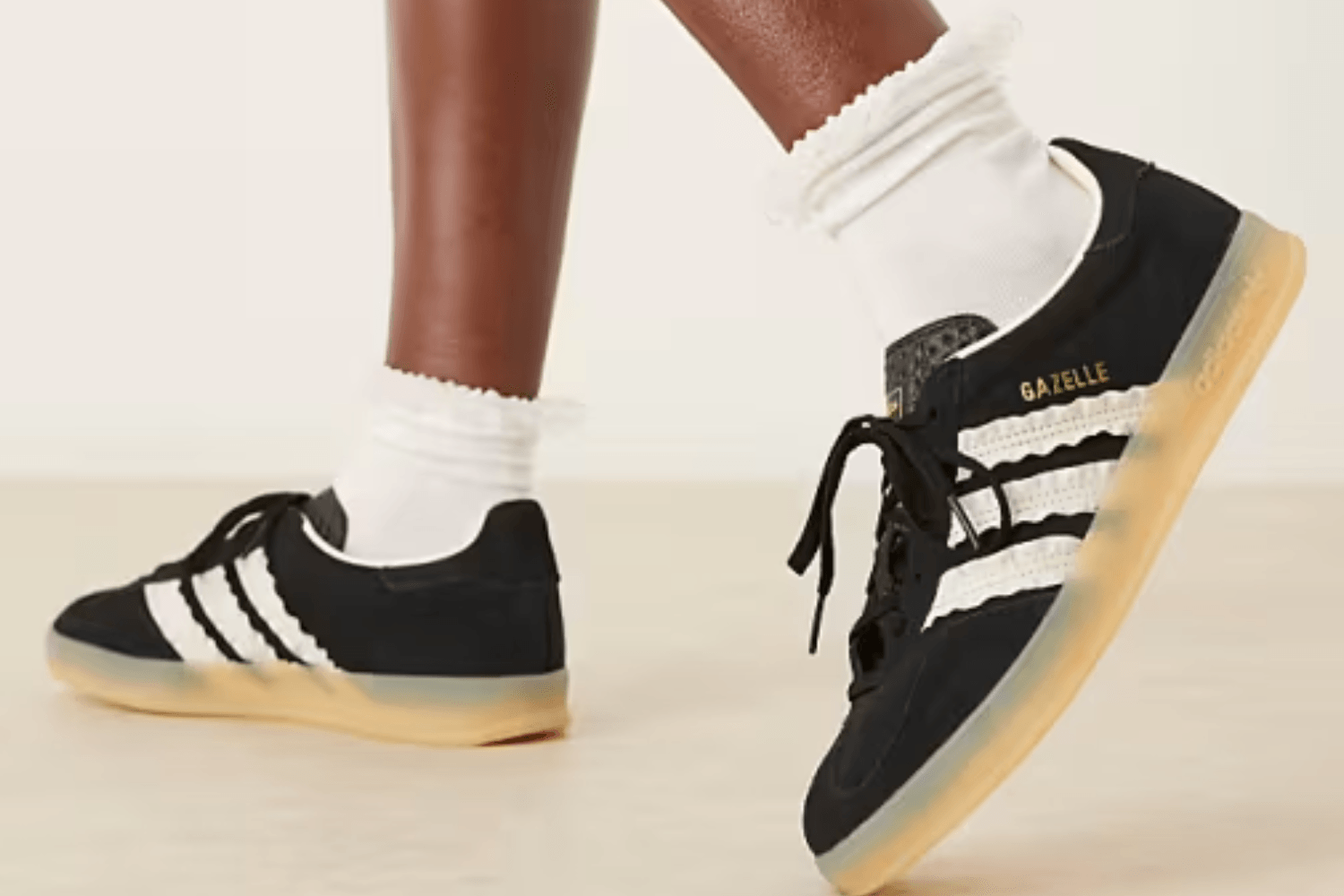The History of adidas
adidas' roots began in the 1920s, when the Dassler brothers Adolf (‘Adi’) and Rudolf opened Gebrüder Dassler Schuhfabrik (Dassler Brothers Shoe Factory) in Herzogenaurach, Germany. In 1949, the partnership fell apart, and Adi established the adidas (Adi + Dassler) brand after a disagreement with Rudolf, who went on to found PUMA.

adidas officially registered its signature 3-Stripes trademark shortly afterwards: an iconic design that was intended for both branding and shoe stabilisation.
A defining moment for the brand came in 1954, when the West German national football team defeated the Hungarians in the FIFA World Cup wearing adidas shoes. Revolutionary at the time, the boots featured screw-in studs that could be adjusted based on pitch conditions. This innovation catapulted adidas to international fame.

Following this triumph, adidas quickly expanded its presence across other sports, including track and field. adidas was visible on the feet of many top athletes gracing the podiums at the 1960’s Olympic Games, helping the brand become associated not just with elite performance, but with victory itself.
Also developing specialised footwear and apparel for tennis, adidas laid the foundation for a multi-sport empire. What began as a football-first company evolved into a trusted name across nearly every major sport.
adidas made a huge breakthrough into pop and street culture in the 1980s, with the release of Run-D.M.C.’s song ‘My adidas’ becoming a landmark moment in 1986. It was the first time a music act had ever signed an endorsement deal with a sportswear brand, and the partnership connected adidas with hip-hop culture.

Facing strong competition from other sportswear brands including Nike and PUMA, adidas turned to a period of innovation and experimentation as it entered the 21st century. The brand launched numerous high-profile collaborations with designers and creators, most notably with Yohji Yamamoto (Y-3) in 2002.

Intending to close the gap with Nike, adidas acquired Reebok in 2005 for $3.8 billion, however the brand struggled to maintain relevance in the USA, and adidas sold Reebok in 2021 to Authentic Brands Group after their ambitions were never fully realised.
A significant moment in 2013 saw the development of Boost foam in partnership with chemical company BASF. The technology revolutionised comfort and cushioning, especially within the adidas UltraBoost model.

Around the same time, partnerships with Kanye West (YEEZY), Pharrell Williams and Beyoncé propelled adidas to the forefront of sneaker culture. The YEEZY brand in particular became one of the most successful collaborations in sneaker history, though it abruptly ended in 2022 after controversial remarks by Kanye West.

In 2015, adidas became a leader in sustainability, partnering with Parley for the Oceans and introducing products made from recycled marine plastic. Although the partnership ended in 2024, adidas continues to innovate through environmental initiatives on biodegradable and circular materials.

Today, adidas remains a powerhouse in the world of sportswear and fashion, continuing to shape the landscapes of sport, culture and design.
Iconic adidas Releases
- 1950 – Samba: created as an indoor training shoe.
- 1966 – Gazelle: created as a versatile training shoe.
- 1969 – Superstar: designed as a low-top basketball shoe.
- 1971 – Stan Smith: originally named for Robert Haillet, renamed for Stan Smith.
- 1972 – SL 72: released for the 1972 Munich Olympics.
- 1984 – Forum: a premium basketball shoe
- 1994 – Predator: a football boot created to enhance ball control
- 2015 – UltraBoost: a high-performance running shoe
- 2015 – NMD: designed as a lifestyle sneaker
- 2015 – Yeezy Boost 350: part of the collaboration with Kanye West

adidas: Answering Your Questions
When was adidas founded?
adidas was founded in 1948, after brothers Adolph ‘Adi’ and Rudolph Dassler ended their partnership in the Dassler Brothers Shoe Factory. Adi established adidas, while Rudolph went on to found PUMA.
Who owns adidas?
A publicly traded company, adidas is owned by its shareholders.
Who is the CEO of adidas?
As of 2023, Bjørn Gulden, formally CEO of PUMA, is currently the CEO of adidas.
Where are adidas’ headquarters?
adidas' global headquarters are located in Herzogenaurach, Germany – the same town it was founded in. It is specifically situated at Adi-Dassler-Straße 1, D-91074 Herzogenaurach, within the 'World of Sports' complex. Several key buildings are housed here, including the Arena (resembling a football stadium and built in 2019), the Halftime building (completed in 2018) and the Laces building (which has housed thousands of employees since 2011).
What does adidas stand for?
adidas (pronounced ah-dee-dass) is a combination of founder Adolph ‘Adi’ Dassler’s nickname and surname – Adi + Dassler = adidas.
What is the adidas slogan?
Known for their slogan ‘Impossible is Nothing’ for over 20 years, adidas recently changed their slogan to ‘You Got This’ in 2025, reflecting a shift in adidas’ vision for sports and its role in people’s lives.
Does adidas own Reebok?
adidas acquired Reebok in 2005 for $3.8 billion, but later sold the brand to Authentic Brands Group in 2021.
Where are adidas shoes made?
adidas shoes are made in numerous countries, with the majority of production taking place in Asia. The majority of adidas' footwear and apparel production is manufactured in Vietnam, followed by Indonesia, China, Cambodia, Thailand, India and Pakistan. Some accessories and gear are also made in Asia.
Is adidas sustainable?
adidas is actively working towards becoming more sustainable, using recycled materials, investing in circular product design, and moving towards carbon neutrality in production. Despite this, adidas still faces many challenges.
What is adidas Boost?
adidas' Boost technology provides enhanced comfort and energy return through an innovative cushioning system. A special midsole that combines thousands of TPU pellets creates a bouncy and responsive feel.
Does adidas still sell YEEZY?
adidas no longer makes or sells YEEZY sneakers, with the last pairs sold at the end of 2024. The long-standing partnership between adidas and Kanye West ended in 2022 after the rapper made numerous controversial comments.
Do adidas shoes fit true to size?
For information on how different adidas models fit, head to our dedicated adidas Sizing Guide here.
How do you tie adidas sneakers?
For guidance on tying your adidas laces, check out our Ultimate Sneakerjagers Lacing Guide!
How do I clean my adidas sneakers?
An adidas sneaker should be cleaned by hand. For the best results, remove the laces, then use a toothbrush to remove obvious dirt from the surface. Mix two drops of a mild detergent with 1 cup/240ml of warm water and use a sponge or cloth to gently scrub harder stains. Use a damp cloth to wipe off the residue, then let them air-dry.
For suede or nubuck, use a suede brush to remove surface dirt, a suede or pencil eraser for scuffs, and white vinegar or suede cleaner for stains. Dip a microfibre cloth into the liquid and lightly dab it on, let dry, then brush it over.
For a smelly sneaker, you can sprinkle baking soda inside the shoe, then leave overnight. The powder will absorb moisture and neutralise the smell. Shake out the excess before wearing again. Alternatively, you can use silica gel or activated charcoal bags for the same results.
Laces can be cleaned with a mild detergent and rinsed afterwards, or you can put white laces in a 1:5 bleach and water solution for a few minutes and then rinse thoroughly with clean water.
In addition, we do not recommend putting your shoes in the washing machine. Sneakers made of leather and suede can come out damaged. With shoes made of canvas or cotton, the risk is less, but the chance of damaged sneakers remains. So we recommend always washing your sneakers by hand. If you do put them in the washing machine, then place the shoes in an old pillowcase beforehand.
Where can I buy adidas sneakers?
Do you have your eye on this brand? With our sneaker search engine, you can browse adidas at different retailers and at different prices. Our release calendar also keeps you up to date on adidas restocks and new releases!

Popular adidas Models
adidas Gazelle
Originally introduced in 1966, the adidas Gazelle was designed as a versatile training shoe. Known for its sleek silhouette and soft suede upper, the Gazelle became especially popular in the ‘80s and ‘90s as part of terrace and streetwear culture.
Its simple design with contrasting three stripes and a rubber sole makes it a timeless casual sneaker.

adidas Samba
One of adidas’ oldest models, the Samba was released in 1950 as an football shoe for icy surfaces. It features a durable leather upper, suede overlays, and a distinctive gum rubber sole.
The Samba transitioned from the pitch to the street, becoming a staple in casual fashion, especially among football fans and skaters.

adidas Campus
Originally a basketball shoe from the 1980s, the Campus is made with suede uppers and a rubber cupsole. Known for its minimal design and durability, it became a favourite in hip-hop culture, notably worn by acts like the Beastie Boys.
Its low-profile silhouette and streetwise appeal have kept it relevant for decades.

adidas Superstar
Introduced in 1969 as a low-top basketball shoe, the Superstar became iconic for its rubber shell toe, leather upper, and durable construction.
It rose to pop culture fame in the 1980s, largely due to Run-D.M.C., who wore them laceless and even dedicated a song to the model, cementing its streetwear legacy.

adidas Stan Smith
Named after the tennis champion, the Stan Smith debuted in the early 1960s (originally as the "Haillet"). It’s characterised by its clean leather upper, green heel tab, and perforated three stripes.
The Stan Smith's minimalist aesthetic has made it one of adidas' best-selling sneakers worldwide.

adidas Forum
Launched in 1984 as a premium basketball shoe, the Forum stands out with its high-top design, ankle strap, and superior padding. It was a innovation in performance at the time and later adopted by hip-hop and fashion communities.
Today, it’s available in various heights, including low and mid.

adidas Spezial
Released in 1979 as a handball shoe, the Spezial was made for grip and agility, featuring a suede upper and gum sole. While rooted in performance, it became a retro classic embraced by sneakerheads and modern streetwear culture.
adidas has since expanded the Spezial name into a full heritage-inspired lifestyle line.

adidas UltraBoost
Debuting in 2015, the UltraBoost revolutionised running shoes with its Boost midsole, supplying superior energy return and a Primeknit upper for an adaptive fit.
Originally intended for performance, it quickly crossed into lifestyle wear thanks to its futuristic look and comfort, making it a streetwear favourite.

adidas NMD
Released in 2015, the NMD (Nomad) merges archival design elements with cutting-edge technology. It uses Boost cushioning and a Primeknit upper, with EVA plugs on the midsole for a bold visual identity.
The NMD is a purely lifestyle sneaker, appealing to urban trendsetters with its sleek, modern aesthetic.

For more FAQs on your favourite sneaker brands and models, visit the Sneaker FAQ page.







